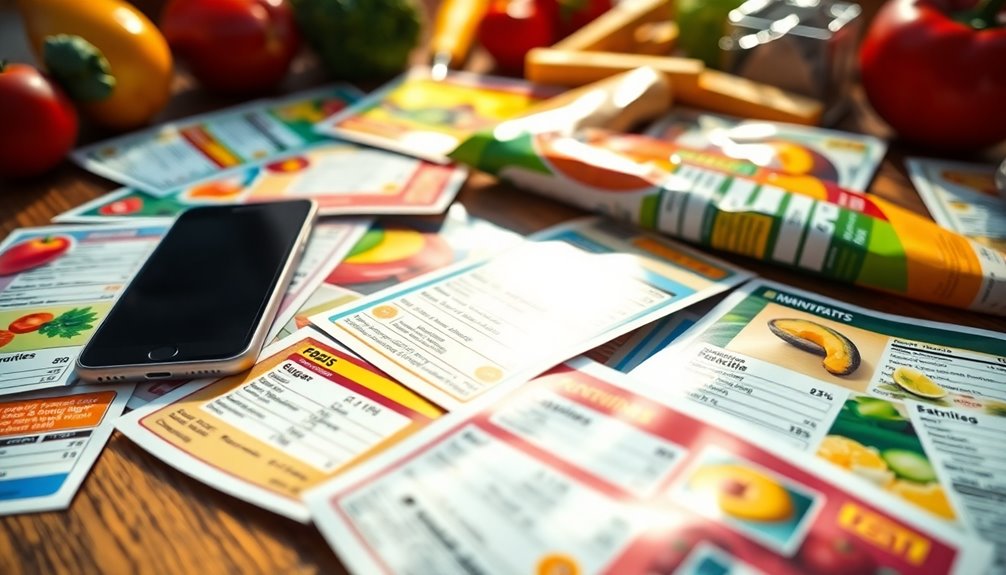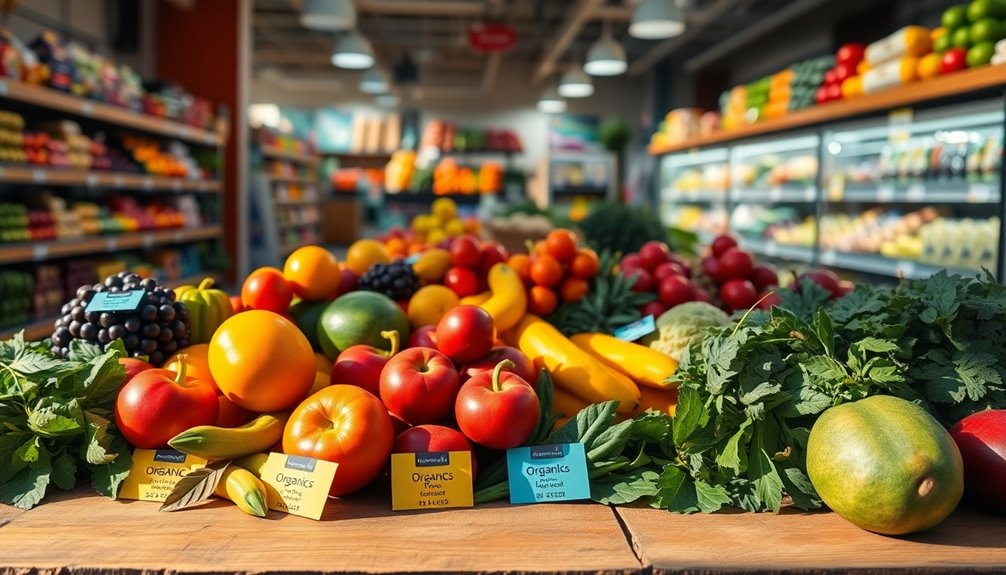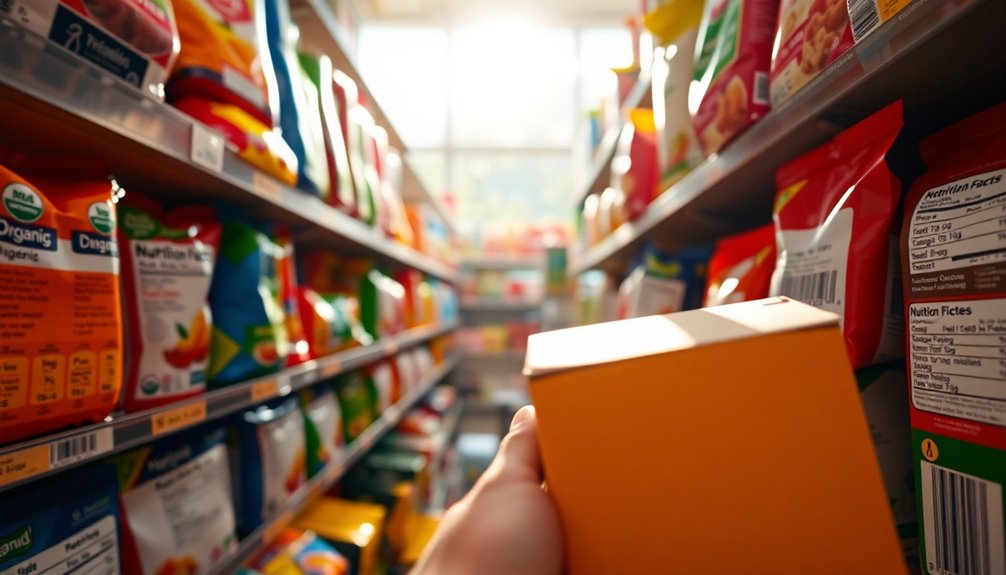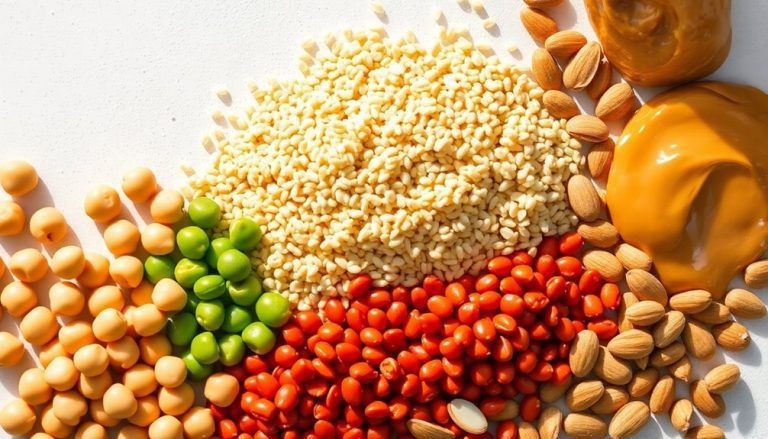Food labels offer essential information that can guide your health choices. They disclose nutritional facts like serving size, total calories, and nutrient breakdown, helping you balance your diet. Look for terms like "organic," which indicates fewer chemicals, and "whole grain," which is better than refined grains. However, don't be tricked by misleading claims like "natural" or "low fat," since these can still contain unhealthy ingredients. Pay attention to added sugars and sodium levels for better health outcomes. There's a lot to consider, so you'll want to explore what else these labels reveal about your food choices.
Key Takeaways
- Food labels provide essential nutritional information, helping consumers make informed choices about calorie intake and nutrient quality.
- Terms like "natural" and "organic" can be misleading; always check for certifications and ingredient lists for clarity.
- Serving sizes on labels help compare nutritional values realistically, ensuring appropriate portion control in diet planning.
- Added sugars and sodium levels are crucial indicators of health; high amounts can contribute to serious health issues.
- Look for whole foods and high fiber options to enhance nutritional intake and promote better digestive health.
Understanding Nutritional Information

Understanding nutritional information on food labels is crucial for making informed dietary choices. When you look at a food label, you'll find key components like serving size, calories, and nutrient values. By paying attention to these details, you can better gauge how a food fits into your overall diet.
Start with the serving size, as it sets the standard for all the nutritional information provided. If you eat more than the serving size, you'll need to adjust the calorie and nutrient values accordingly.
Next, check the total calories—this helps you manage your energy intake throughout the day. Additionally, growing your own food in raised garden beds can provide fresh ingredients that may enhance your meals and overall nutrition.
The nutrient breakdown is where you can identify what's beneficial or harmful. Watch out for high levels of saturated fat, added sugars, and sodium, which can impact your health. On the flip side, look for vitamins, minerals, and dietary fiber that contribute positively to your well-being. Additionally, incorporating knowledge from essential gardening books can help you grow your own nutrient-rich foods, enhancing your dietary choices.
Finally, don't forget to check the % Daily Value, which indicates how a specific nutrient fits into your daily dietary goals. By understanding these elements, you empower yourself to make healthier choices that align with your personal health goals.
Decoding Common Label Terms
When scanning food labels, you'll come across various terms that can sometimes be confusing. Understanding these terms can help you make better choices for your health.
For instance, "natural" doesn't always mean healthy; it simply indicates that the product contains no artificial ingredients. "Organic" refers to how food is grown or processed, but you'll need to check for certification to know it's truly organic. Many people prefer organic options, as they are often produced without the use of synthetic pesticides.
Another term you might see is "whole grain." This means the product includes the entire grain kernel, which is usually better for you than refined grains.
If you spot "low fat" or "fat-free," keep in mind that these foods can still be high in sugar or calories, so always check the overall nutritional content.
You'll also encounter "fortified" or "enriched," which means vitamins and minerals have been added to the product. While this can be beneficial, it shouldn't replace a balanced diet.
Lastly, "gluten-free" indicates the absence of gluten, making it suitable for those with gluten sensitivities. Additionally, choosing foods from self-watering planters can be a great way to incorporate fresh, nutrient-rich ingredients into your meals.
The Impact of Organic Foods

Organic foods have gained significant popularity in recent years, and for good reason. When you choose organic products, you're often opting for foods that are grown without synthetic pesticides or fertilizers, which can have a positive impact on your health and the environment.
Here are some benefits you might experience when incorporating organic foods into your diet:
- Fewer Chemicals: You reduce your exposure to harmful residues found in conventional produce.
- Nutritional Benefits: Some studies suggest organic foods may contain higher levels of certain nutrients.
- Environmental Impact: Organic farming practices can lead to healthier soil and ecosystems, and the use of organic mulching materials can further enhance soil health.
- Animal Welfare: Organic standards often provide better living conditions for livestock.
- Taste: Many people claim organic foods taste fresher and more flavorful than their conventional counterparts.
Misleading Claims to Watch Out For
While choosing organic foods can offer many advantages, it's important to be aware of misleading claims that can confuse consumers. Terms like "natural" and "healthy" often appear on labels, but they lack strict definitions. Just because a product claims to be "natural" doesn't mean it's free from harmful additives or pesticides.
Another common phrase is "made with whole grains." This can be deceiving, as it may only contain a small amount of whole grains while the rest is refined.
Similarly, "low fat" doesn't always equate to healthy; manufacturers often compensate for the loss of fat with added sugars, which can be just as detrimental to your health.
You should also watch out for "light" or "lite" products. These items might've fewer calories, but they can still be packed with unhealthy ingredients.
Lastly, be cautious of "sugar-free" labels. They might use artificial sweeteners, which could pose other health risks.
Tips for Healthier Choices

Making healthier choices at the grocery store starts with being informed about what you're buying. Food labels can be confusing, but understanding them can empower you to select better options. Here are some tips to help you navigate the aisles:
- Read the ingredient list: Look for whole foods and avoid products with long lists of artificial ingredients.
- Check serving sizes: Compare the nutrition information based on realistic serving sizes to get a better picture of what you're consuming.
- Look for added sugars: Be mindful of items with high sugar content, as they can contribute to health issues.
- Choose high fiber foods: Foods rich in fiber can keep you full longer and support digestive health.
- Watch sodium levels: Aim for low-sodium options to help maintain healthy blood pressure.
Frequently Asked Questions
How Do Food Labels Vary by Country?
Food labels vary significantly by country due to different regulations and cultural preferences. You'll notice variations in ingredient listings, nutritional information, and allergen warnings, which can impact your understanding of what you're consuming.
Are Food Labels Regulated by Government Agencies?
Aren't you curious about who ensures food labels are accurate? Yes, government agencies regulate them, setting standards for nutritional information, ingredient lists, and health claims to protect consumers and promote informed choices.
Can I Trust Third-Party Certifications on Labels?
You can generally trust third-party certifications on labels, as they often indicate adherence to specific standards. However, it's essential to research the certifying organization to ensure its credibility and reputation in the industry.
What Role Do Food Labels Play in Allergies?
Ever wondered if that snack could trigger your allergies? Food labels play a crucial role, helping you identify allergens. By reading them carefully, you can protect yourself and make informed choices about what you consume.
How Often Do Food Labels Change?
Food labels change periodically, often due to new regulations, recipes, or ingredient sourcing. You should check them regularly, as updates can affect allergens, nutritional information, and serving sizes, ensuring you stay informed about what you're consuming.
Conclusion
In the end, food labels can feel overwhelming, but understanding them is key to making healthier choices. Don't just trust buzzwords like "organic" or "natural"—dive deeper into the nutritional information and watch for misleading claims. Remember, the healthiest options often come from whole, minimally processed foods. By learning to decode these labels, you're not just shopping; you're taking control of your health and well-being. Empower yourself, because knowledge is your best ingredient for a healthier life!




